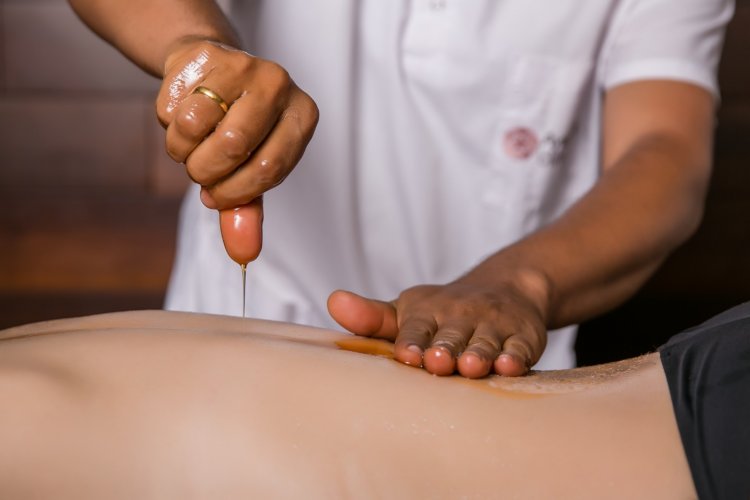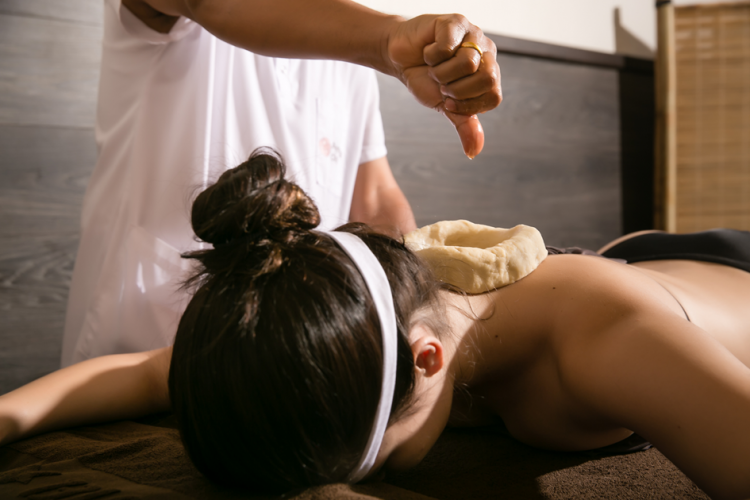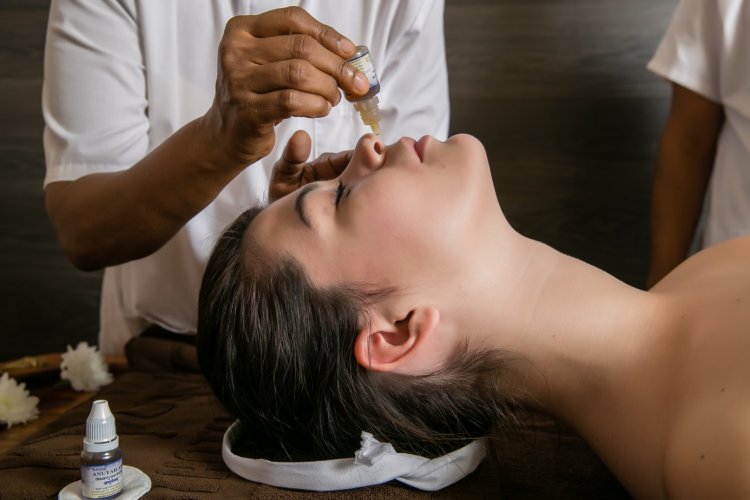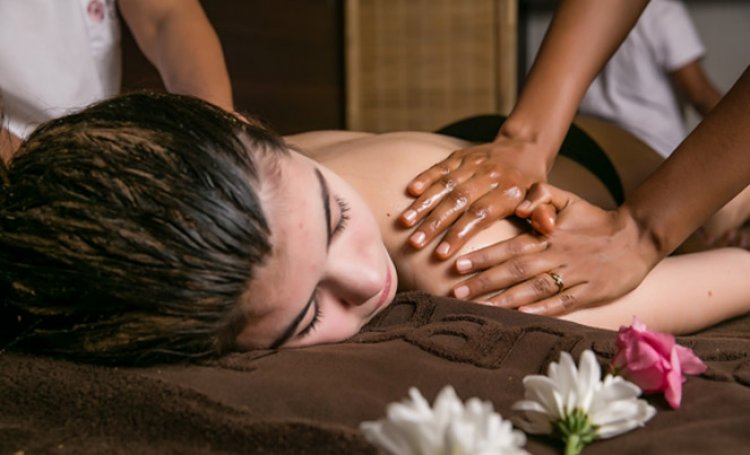What is the healing strategy of Ayurveda
Ayurveda associates health with the balance of the three energies in the body through which the processes in the body are carried out. Each of these energies (Doshas) is responsible for a certain type of processes – Vata is responsible for the movements, Pitta manages the transformations, and Kapha is responsible for the condition of the liquids.
Each one of these energies are set in a unique proportion for every person at birth, as their proportion is very rarely in total balance – usually one or two of them is predominant. This also determines the type of body – it may be Vata, or Pitta, or Kapha, or combined. This determines the appearance of the person, his character, his preferences, predisposition to certain diseases, etc.
When one of the Doshas goes out of the balance, the functions of a certain type of organs are disturbed and this causes certain diseases. Each Dosha which is out of balance can cause an imbalance in the other two, which results in the development of more illnesses. Therefore, in order to be in optimal health, the original equilibrium of Doshas must be respected.
Thus, the oils in Ayurveda, as well as all other measures of the overall healing course, are used precisely to return the deviated Doshas to the original balance while also aiming at cleansing of toxins. Furthermore, their application is according to the body type of the person and the occurred energetic deviations, as the application of each oil depends also on the time and place, the properties, the age of the patient and so on.
 Place and role of the oils in the Ayurvedic treatment
Place and role of the oils in the Ayurvedic treatment
Ayurveda has used numerous vegetable oils for millennia to treat various diseases, as well as to provide protection from these diseases. The healing properties of the oils are described in Ayurvedic medical writings before the New Age.
There are preserved texts of Sanskrit from 4-5 centuries BC, containing descriptions of oil properties, combinations formulas and their application for certain diseases, how and in what sequence to apply them according to the patient’s body type /Dosha/, existing energy deviations in the body, and other specific features. Prior to writing, knowledge was given orally by a sage to disciples, most often among hereditary healers in ancient India.
Oils in Ayurveda are usually combinations of the basic extract – for example, sesame oil and herbs cooked in it according to the purpose of the treatment or prophylaxis. Typically, the combined herbal extracts are between 20 and 50, but there are oils with over 130 ingredients.
Ayurveda prescribes the oils for internal and external intake. The external includes pouring, retention of oils in special wells of a round dough, massages, local and overall impact on the body. For oral internal intake, the purified Ghee butter is most commonly used, and castor oil is also traditionally used. Oils can also be applied through the nose or ear, such as ointments, oil enemas, etc. Through them it is possible to nourish damaged tissues, purify toxins from the body and activate various organs and systems. For example, blood composition, skin elasticity, activity of nerve tissue, colon, lungs, bones and bone marrow, and so on are improved.
Oils are therefore an integral part of the overall healing strategy of Ayurveda – it is natural for the body to be helped to restore its natural functions to the optimum extent and thereby eliminate the conditions for the onset and development of any disease, and to achieve a general rejuvenation.
 How Ayurveda uses the oils according to the Doshas
How Ayurveda uses the oils according to the Doshas
Vata Dosha is the most susceptible to changes and most easily causes imbalances in the other energies. Pitta and Kapha are static without Vata and are therefore highly dependent on it. Thus, in almost every treatment, the use of oils is consistent with balancing the Vata.
Because of the coolness of this Dosha, heavy warming oils are used – sesame, linseed, almond, as oil extracts of valerian, aerum, etc. are suitable. The places where oils are applied to balance the aggravated Vata are the crown, ears, the lower part of the stomach and the back, the legs to the knees.
For Pitta are used cooling oils from sunflower, coconut, as well as oil extracts from peppermint, dill, roots of dandelion and burdock, St. John’s wort, nettle, etc. The treatment areas here are the crown and forehead, the area of the heart, the legs to the knees.
For balance of Kapha are suitable light oils such as corn and mustard, as sesame oil is also suitable.
The oils should be applied to the legs to the knee, the area of the lungs, avoiding the heart area. In respiratory diseases for the removal of accumulated mucus are used in the area of sinuses and forehead over the eyebrows. If the body type is mixed, for example Vata/Pita, combine in equal proportions oils suitable for each of the two Doshas.
The symptoms that indicate which Dosha is aggravated are also a reference point for the types of oils to be used. For example, insomnia, exhaustion, confusion, low concentration, and unsettled thoughts and confused speech, dizziness, tremor, swelling, constipation, indicate the need for oils that soothe Vata.
Symptoms of unbalanced Pitta are easy irritability and anger, thirst and hunger, yellowish eyes or skin, as well as stools, and so on. These symptoms indicate the need of oils that can balance Pitta.
The unbalanced Kapha is characterized by flabbiness, lethargy, drowsiness, heaviness in the body and limbs, chills, nausea, severe breathing and cough, etc. For sensitive skin, acne, etc., are suitable the Ghee oil, coconut oil, extract from dandelion root and mint.
 How Ayurveda achieves the full healing effect of oils
How Ayurveda achieves the full healing effect of oils
Very important for the oils in Ayurveda is their preparation, so they can be properly absorbed and have a full healing effect.
Therefore, a very good knowledge of plant development is needed to select the best time to harvest the given herb during the year. Moreover, knowledge of astrology is also needed because ancient Indian healers have linked the stages of plant development to the location of the stars.
The preparation of the healing oil can take a month, with some of the herbs being used to enhance the properties of others. In some cases, the herb may be in the ratio 1: 4 with 16 parts of water and boil between 4 and 8 hours on low heat until the water evaporates.
It is also possible to add the same amount of oil to the herbal potion of a plant and boil until the water is completely evaporated. In such a case, however, it must be carefully strained so that there are no residues of the herb in the oil.
Furthermore, it has to be well known which herb can undergo a heat treatment in order to preserve the healing properties of the oil extract. Mint for example, as well as camphor, jasmine and others, should not be heated and therefore only one or two days of soaking in the oil is enough for them, then followed by a straining. Other herbs, such as mustard, carnation, etc., can be boiled for hours but, of course, on low heat, carefully following the process.
The application of oils is also complied with the climatic characteristics of the period and the place of use – seasons, ski resorts or the sea for tourism, etc.
For example, cold and dry winters require warming and moistening; cooling oils are used during the hot summer, warming and drying are required for the wet and cool autumn, so the use of heavy oils is generally limited.
Autumn and spring require dry heat, baths and warming drying. Of course, the climatic features are not schematic – for example, autumn may not be humid, but windy and dry, which should also be taken into account when choosing oils. These climatic peculiarities of the seasons also apply to different areas of tourism – mountain, plains, sea, etc. according to the characteristics of cold, warm, wet, dry and their different combinations.
 Use of heavy and light oils in Ayurvedic treatment
Use of heavy and light oils in Ayurvedic treatment
For the oils used in Ayurveda, one more special feature must be mentioned – there are heavy oils called “carriers” and essential oils called “light”.
Heavy oils, such as corn, coconut, sesame etc., are used abundantly and penetrate deeply into the body, reaching internal tissues and organs. They nourish and purify from toxins, balancing the Doshas.
Fragrant oils are mainly used for aromatherapy in small quantities, as they themselves enter the superficial layers of the body. They are extracted from different parts of the plants – seeds, roots, wood or bark, leaves, fruits.
Fragrances such as basil, geranium, lavender, etc., affect the millions of olfactory cells in the olfactory mucosa, and from there – directly into the brain and affects emotions, movements, memory. So they can release the hormone of happiness, causing calmness and a sense of well-being.
Fragrant oils can also be used by rubbing, but then they are not concentrated but mixed with carriers. Thus they reach the lymph, and from there – to the organs, improving their functions and having soothing effect on the whole body.
 Universal oils in the Ayurvedic treatment
Universal oils in the Ayurvedic treatment
There are also universal oils in Ayurveda that can be used for the different Doshas for the two main goals of treatment – cleansing of toxins and restoration of the energy balance. Such is, for example, the oil extracted from wheat germ, as it can be used in combination with other oils.
It has a strong detoxifying effect. Another universal oil is derived from evening primrose. It is more suitable for internal intake, but in combination with other oils it is also applied externally. The oil is applied to reproductive and hormonal diseases, it also increases immunity and is therefore also recommended for pregnant women.
Jojoba oil has anti-inflammatory properties, contains many vitamins and minerals. It is suitable for skin protection and hair care. The list can be continued with Ghee, aloe Vera oil, apricot kernels, hazelnuts and others.

 Place and role of the oils in the Ayurvedic treatment
Place and role of the oils in the Ayurvedic treatment How Ayurveda uses the oils according to the Doshas
How Ayurveda uses the oils according to the Doshas How Ayurveda achieves the full healing effect of oils
How Ayurveda achieves the full healing effect of oils Use of heavy and light oils in Ayurvedic treatment
Use of heavy and light oils in Ayurvedic treatment Universal oils in the Ayurvedic treatment
Universal oils in the Ayurvedic treatment
0 Comments